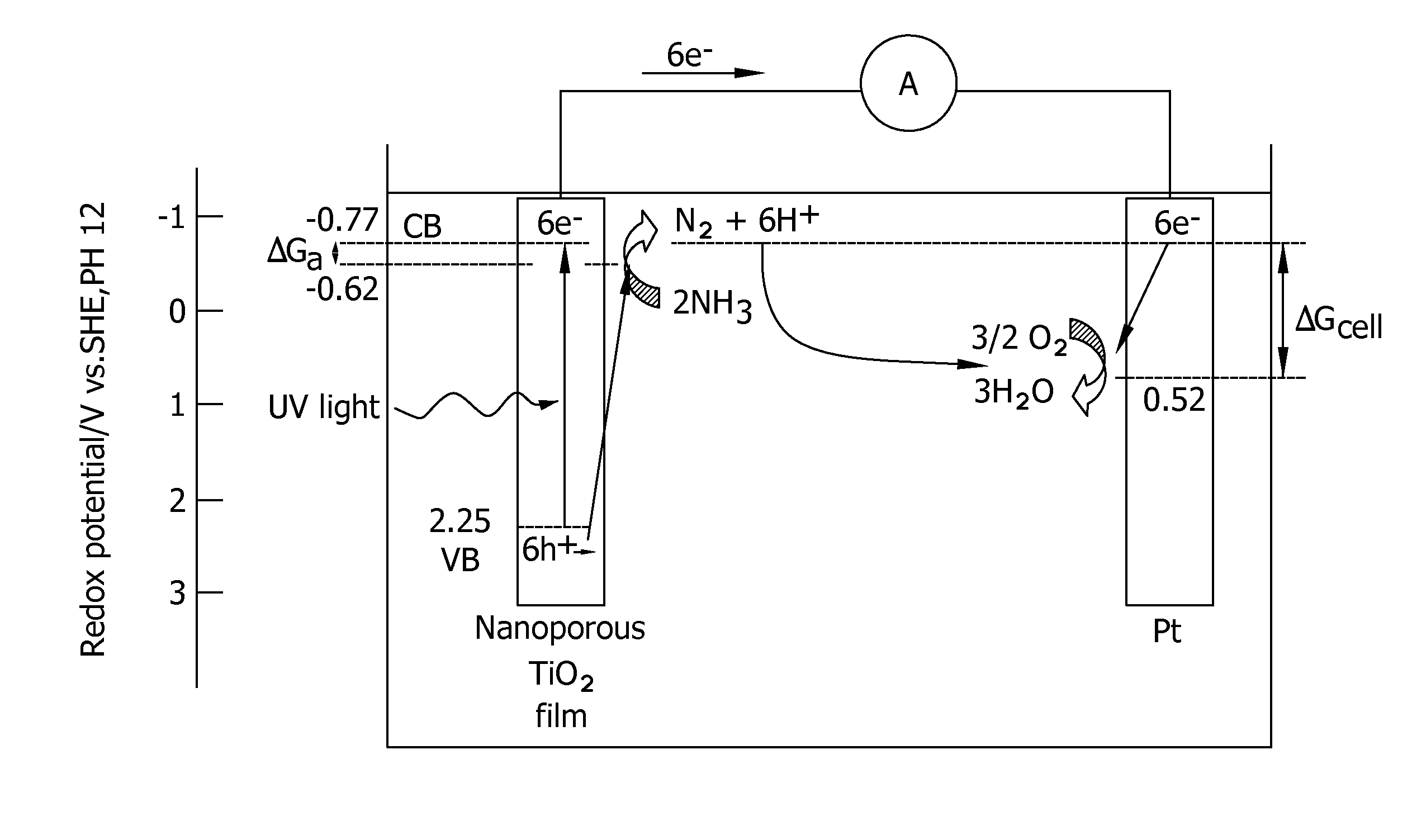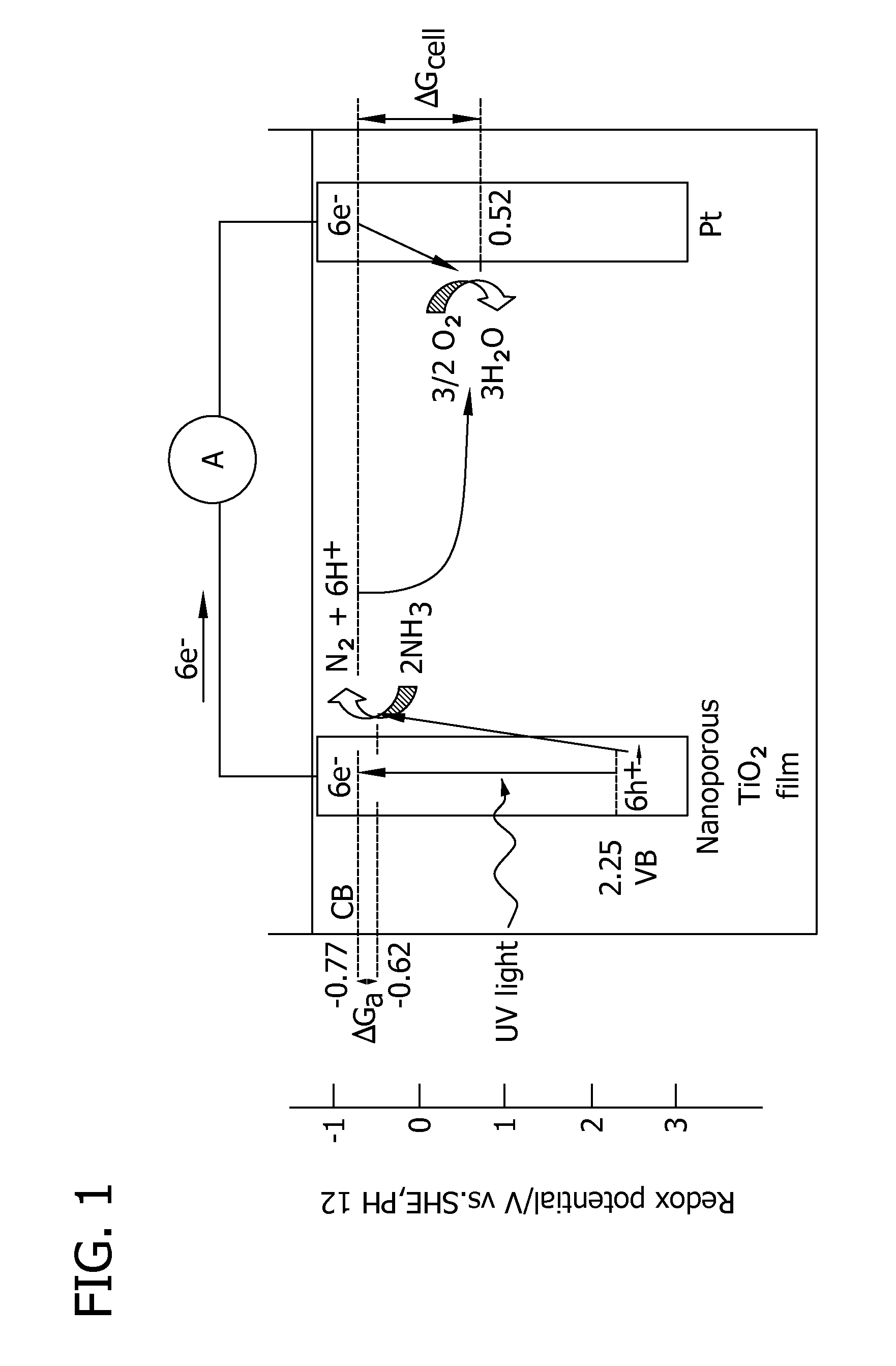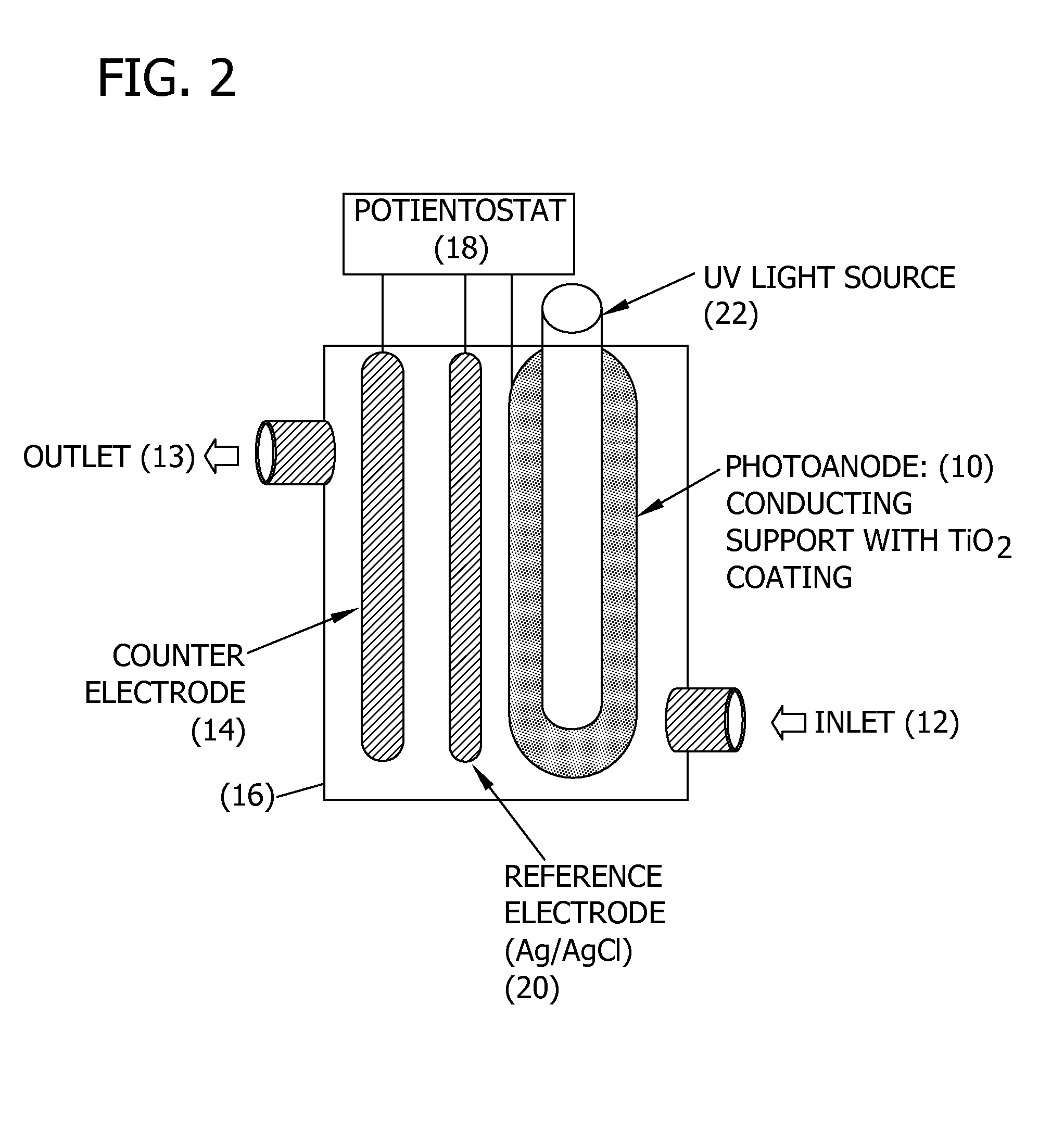Methods for removing contaminants from aqueous solutions using photoelectrocatalytic oxidization
a technology of photoelectrocatalytic oxidation and aqueous solutions, which is applied in the nature of treatment water, contaminated groundwater/leachate treatment, multi-stage water/sewage treatment, etc., can solve the problems of recirculation aquaculture, unfavorable economic recirculation, and more cost effective production of food fish in ponds and other open systems. , to achieve the effect of improving the performance of the photoelectrocatalytic oxid
- Summary
- Abstract
- Description
- Claims
- Application Information
AI Technical Summary
Benefits of technology
Problems solved by technology
Method used
Image
Examples
example 1
[0211]Static test system. The photoanode was rolled into the cylinder and disposed into a 300 ml glass beaker. The UV light source contained in a quartz sleeve (32 mm ID, 35 mm OD, 15 cm long) was disposed in the center of the beaker. The cathode (which was the counter electrode) comprised a Ti wire (0.5 mm diameter and 15 cm long from Goodfellow Corp., Oakdale, Pa.). The reference electrode comprised a silver wire (0.5 mm diameter and 15 cm long from Goodfellow Corp., Oakdale, Pa.).
[0212]The cathode and reference electrodes were attached to the outer wall of the quartz sleeve with silicon glue running parallel and separated by 2 cm. The light source was a 9-watt, low-pressure mercury vapor lamp (Jebo Corp., Taiwan, China) that emitted ultraviolet germicidal irradiation (UVGI) at a primary wavelength of 254 nm. The distance from the light to the photoanode was approximately 5 cm. Four identical static PECO systems were prepared for replicate testing.
[0213]Each experiment, except the...
example 2
[0220]Chemicals. TiO2 coatings on photoanodes were made from titanium isopropoxide (Aldrich Chemical, 97%) and nitric acid (Aldrich Chemical, American Chemical Society reagent grade). NH4Cl and NaCl were obtained from Fisher Scientific (Fairlawn, N.J.). NaNO3 and NaNO2 standards were obtained from SPEX Certiprep (Metuchen, N.J.). NH4+ / NH3 was measured using commercial kit reagents for indophenol method. All chemicals were used without further purification. All solutions were prepared with ultrapure water (18.1 Mω cm) from a NANOpure UV system (model 07331, Bamstead / Thermolyne, Dubuque, Iowa).
[0221]Composite Photoanode Preparation. The photoanode substrate material was annealed titanium foil 0.05 mm thick (99.6+% purity, Goodfellow Cambridge Ltd). Foils were cut to size for the experimental cell and pre-heated to remove organic contaminants by firing for 300° C. for 3 h. Suspensions of titanium dioxide were prepared using processing methods. (See Candal et al., 1998). Photoanodes wer...
example 3
[0229]Fifteen minute chronoamperometry experiments were conducted to analyze the effects of salinity, light intensity, and applied potential on the photoelectrocatalytic oxidation of aqueous NH4+ / NH3. TiO2 coatings were applied to Ti foil by dip coating and sintered at 400° C. to sinter a nanoporous photocatalytic surface. Photoanodes were used in combination with a platinum wire counter electrode and saturated calomel reference electrode (SCE) to test ammonia removal and nitrate / nitrite production at initial ammonium / ammonia concentration 0.54 mg NH4+ / L, initial pH 7 in a well-mixed static reactor with compressed air sparged into solution. At applied potentials greater than −0.4 V, NH4+ was totally removed in ten minutes and less than 3% of the initial NH4+ was converted to NO3− and none was converted to NO2−.
[0230]Chloride ions are present at 0.25 g NaCl / L or greater so that ammonia oxidation occurs. Conversion of NH4− and NO3 to N2 reached 40-41% at lower salinities, but at 31 g ...
PUM
| Property | Measurement | Unit |
|---|---|---|
| pore diameter | aaaaa | aaaaa |
| pore diameter | aaaaa | aaaaa |
| pore diameter | aaaaa | aaaaa |
Abstract
Description
Claims
Application Information
 Login to View More
Login to View More - R&D
- Intellectual Property
- Life Sciences
- Materials
- Tech Scout
- Unparalleled Data Quality
- Higher Quality Content
- 60% Fewer Hallucinations
Browse by: Latest US Patents, China's latest patents, Technical Efficacy Thesaurus, Application Domain, Technology Topic, Popular Technical Reports.
© 2025 PatSnap. All rights reserved.Legal|Privacy policy|Modern Slavery Act Transparency Statement|Sitemap|About US| Contact US: help@patsnap.com



